Computex 2007: Preview Look at Motherboards and More
by Gary Key on June 5, 2007 3:00 AM EST- Posted in
- Trade Shows
Gigabyte
Gigabyte has made a tremendous comeback over the course of the last year by offering quality products at fairly reasonable prices. They have been determined to compete in the enthusiast and gaming sectors again and their recent product introductions have reflected this new direction by the company.
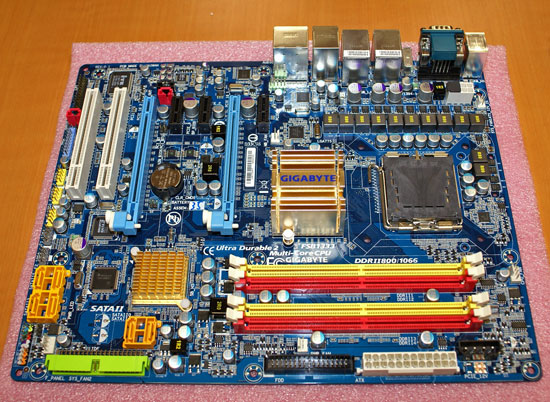

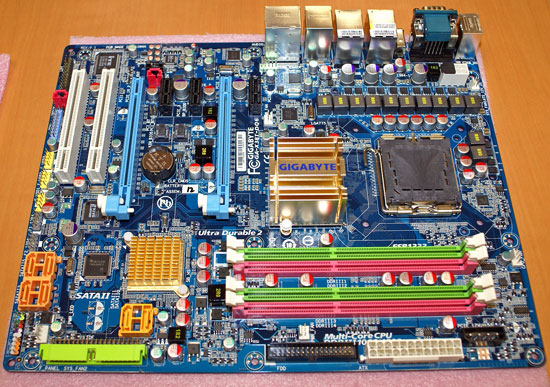
We had an early look at the X38 boards that will be launching near the end of July. These boards do not contain the new heatpipe system that Gigabyte will be using but the layout is basically final. The performance of the boards is excellent, especially with the new 1333FSB CPU and R600 CrossFire combination. Gigabyte will be releasing both DDR2 and DDR3 versions of the boards.
On a side note, we have some information for the users of Gigabyte's GA-N680SLI-DQ6 board who were wondering about the new revision 2 launching this month. The difference between the boards is that the rev2.0 board will utilize the 570 SLI Southbridge instead of the 590 SLI Southbridge. NVIDIA is phasing out the 590 SLI Southbridge so Gigabyte and others will be moving to the 570 SLI Southbridge. We should expect to see an updated BIOS shortly. In short, the new revision is not necessarily an improvement; it is merely a change that is necessitated by chipset availability.
ASUS
ASUS is one of the largest manufacturers of motherboards in the world and their current product portfolio is extensive. They are introducing several new motherboard products over the course of the next few weeks that will range from server level to high-end gaming boards.
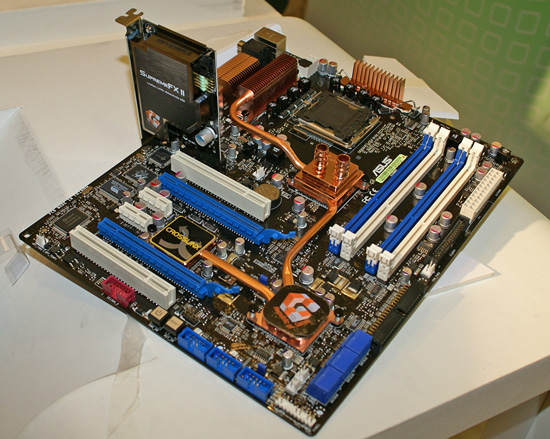
ASUS listened to the user base and reviewers who have been clamoring for a dual x8 capable P35 board for CrossFire instead of the standard x16/x4 configuration. The new Blitz Extreme and Blitz Formula R.O.G. series of motherboards offers that and much more. ASUS has included their CrossLinx Technology (PCIe switching chipset) to enable true dual x8 capability off the P35 MCH. While they were at it, the design engineers decided to offer a hybrid water cooling/heat pipe system that allows the user to water cool the MCH. The "Fusion" block system consists of a solid copper block with 3/8" fittings and an accessory kit that offers ¼" and 10mm converters along with the necessary fittings.
From a performance viewpoint, the dual x8 configuration is showing up to an 8% performance improvement in most titles when compared to the x16/x4 setup, and utilizing a small water cooling system resulted in a 3C~7C improvement in MCH temperatures. The hybrid system works fine without the water cooling although we recommend additional cooling around the CPU area due to the increased temperatures from the P35. ASUS has moved the clear CMOS switch to the back panel, implemented overheat protection in the BIOS for the MCH and ICH chipsets when overclocking, improved the capacitors, and added EFI shielding on the Supreme FX audio card (ADI-1988B codec) along with adding two phase power circuitry to the memory module power delivery system.
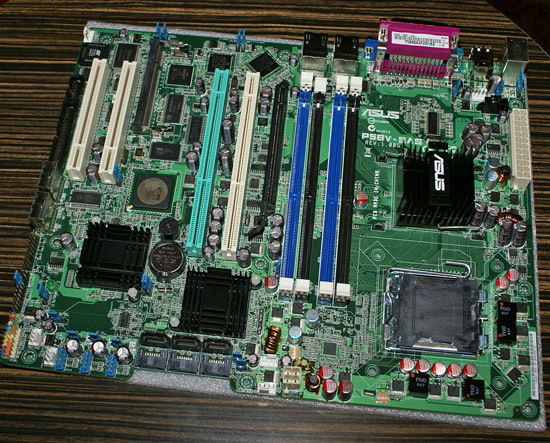
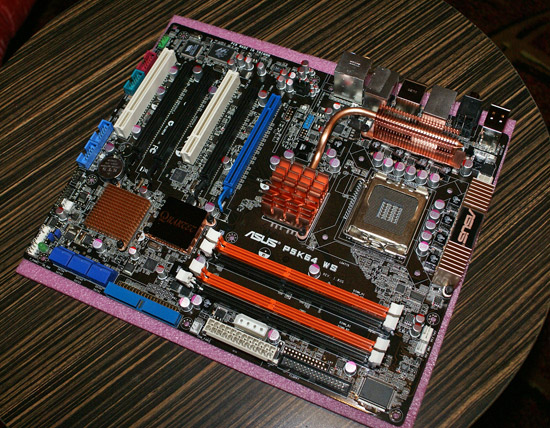
We will have additional details on ASUS' server/workstation products in our next report but the two new releases are the ASUS P5BV-SAS and P5K64 WS motherboards. The P5K64 WS is based on the P35 chipset and ASUS plans on releasing additional workstation boards based on the X38 chipset in August under the P5E64 WS (DDR2) and P53E WS (DDR3) Professional nomenclatures.
Jetway
Jetway Computer is a making a comeback in the US market and plans on concentrating on offering AM2 products that are oriented towards performance on a budget.
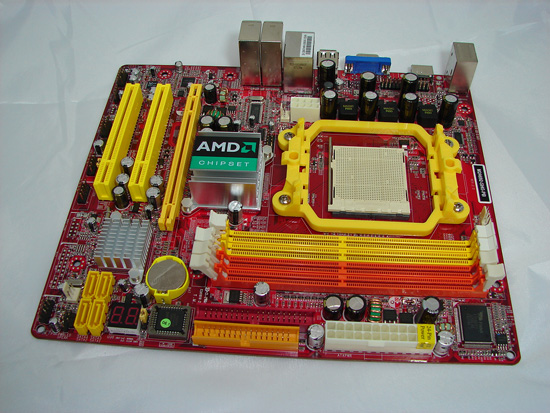
The M2A692-GHG is based on the AMD 690G chipset and offers both HDMI and VGA output along with the standard features found on most AMD690G boards that include HD audio, Gigabit LAN, and four SATA 3Gb/s ports with RAID 0 and 1 capabilities.
Gigabyte has made a tremendous comeback over the course of the last year by offering quality products at fairly reasonable prices. They have been determined to compete in the enthusiast and gaming sectors again and their recent product introductions have reflected this new direction by the company.



We had an early look at the X38 boards that will be launching near the end of July. These boards do not contain the new heatpipe system that Gigabyte will be using but the layout is basically final. The performance of the boards is excellent, especially with the new 1333FSB CPU and R600 CrossFire combination. Gigabyte will be releasing both DDR2 and DDR3 versions of the boards.
On a side note, we have some information for the users of Gigabyte's GA-N680SLI-DQ6 board who were wondering about the new revision 2 launching this month. The difference between the boards is that the rev2.0 board will utilize the 570 SLI Southbridge instead of the 590 SLI Southbridge. NVIDIA is phasing out the 590 SLI Southbridge so Gigabyte and others will be moving to the 570 SLI Southbridge. We should expect to see an updated BIOS shortly. In short, the new revision is not necessarily an improvement; it is merely a change that is necessitated by chipset availability.
ASUS
ASUS is one of the largest manufacturers of motherboards in the world and their current product portfolio is extensive. They are introducing several new motherboard products over the course of the next few weeks that will range from server level to high-end gaming boards.

ASUS listened to the user base and reviewers who have been clamoring for a dual x8 capable P35 board for CrossFire instead of the standard x16/x4 configuration. The new Blitz Extreme and Blitz Formula R.O.G. series of motherboards offers that and much more. ASUS has included their CrossLinx Technology (PCIe switching chipset) to enable true dual x8 capability off the P35 MCH. While they were at it, the design engineers decided to offer a hybrid water cooling/heat pipe system that allows the user to water cool the MCH. The "Fusion" block system consists of a solid copper block with 3/8" fittings and an accessory kit that offers ¼" and 10mm converters along with the necessary fittings.
From a performance viewpoint, the dual x8 configuration is showing up to an 8% performance improvement in most titles when compared to the x16/x4 setup, and utilizing a small water cooling system resulted in a 3C~7C improvement in MCH temperatures. The hybrid system works fine without the water cooling although we recommend additional cooling around the CPU area due to the increased temperatures from the P35. ASUS has moved the clear CMOS switch to the back panel, implemented overheat protection in the BIOS for the MCH and ICH chipsets when overclocking, improved the capacitors, and added EFI shielding on the Supreme FX audio card (ADI-1988B codec) along with adding two phase power circuitry to the memory module power delivery system.


We will have additional details on ASUS' server/workstation products in our next report but the two new releases are the ASUS P5BV-SAS and P5K64 WS motherboards. The P5K64 WS is based on the P35 chipset and ASUS plans on releasing additional workstation boards based on the X38 chipset in August under the P5E64 WS (DDR2) and P53E WS (DDR3) Professional nomenclatures.
Jetway
Jetway Computer is a making a comeback in the US market and plans on concentrating on offering AM2 products that are oriented towards performance on a budget.

The M2A692-GHG is based on the AMD 690G chipset and offers both HDMI and VGA output along with the standard features found on most AMD690G boards that include HD audio, Gigabit LAN, and four SATA 3Gb/s ports with RAID 0 and 1 capabilities.










25 Comments
View All Comments
xsilver - Tuesday, June 5, 2007 - link
you mention a TDP of 36w but it would have been nice to mention the TDP of the p35 as well for comparisonalso the asus P5K64 WS motherboard looks to have 4 full size PCI-e slots? but it only has 16/20 channels to play with? what the?
Tujan - Monday, June 11, 2007 - link
for computer DIY'ers.?Wonderin the problem with having some kind of pre-manufacturered (PCI,slot,or embedded) module for home DIY'ers. There is several 'FM radio offerings from graphics cards manufacturers. Yet the inclusion of both FM,AND..,..''AM"". What is the difficulty with putting these into a module ready for the standards of a computer ?
Is it the difficulty for 'liscencing',cost of implementation,or are the MB /IC manufacturers waiting for the newer station changovers to digital to take place ?
About the only thing missing from the computer armament presently available.Nice Asus system there.
Would an IC manufacturer need some kind of special liscencing from FCC for these components.?
6/11/2007
Gary Key - Thursday, June 7, 2007 - link
P35 TDP is 16W, will get the rest for you when I return. The P5K64 WS will run 8x4x4x4 according to ASUS if you load all four slots. Flight Simulator looks nice on four monitors but that is about it. ;)Chunga29 - Tuesday, June 5, 2007 - link
I don't even know the TDP of P965, 975X, 680i, etc. Why not list all those as well?As for PCIe slots, x1 through x8 slots are pointless. Just use x16 slots everywhere. I don't care if they have x4 or x1 or x2 or x16 bandwidth; just do like Apple and only use x16 physical slots. They're backwards/downwards compatible (with the proper BIOS programming I guess?), so skip using anything less than an x16 connector. Maybe cost a few extra pennies for the plastic, but really, the benefits outweigh the minor price increase.
DigitalFreak - Tuesday, June 5, 2007 - link
It's more likely because of layout issues. You have a lot less space to place components on a board when you have 4 or more long 16x slots.